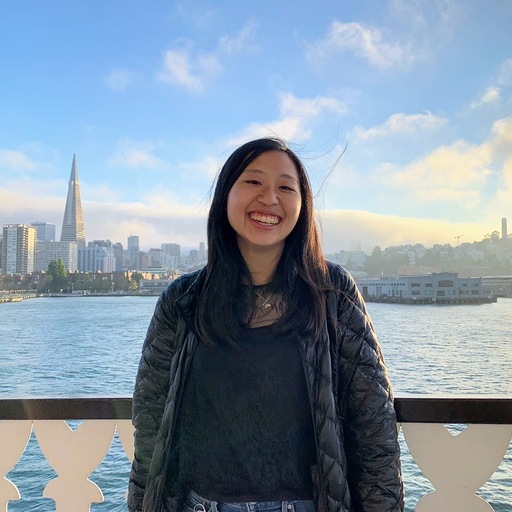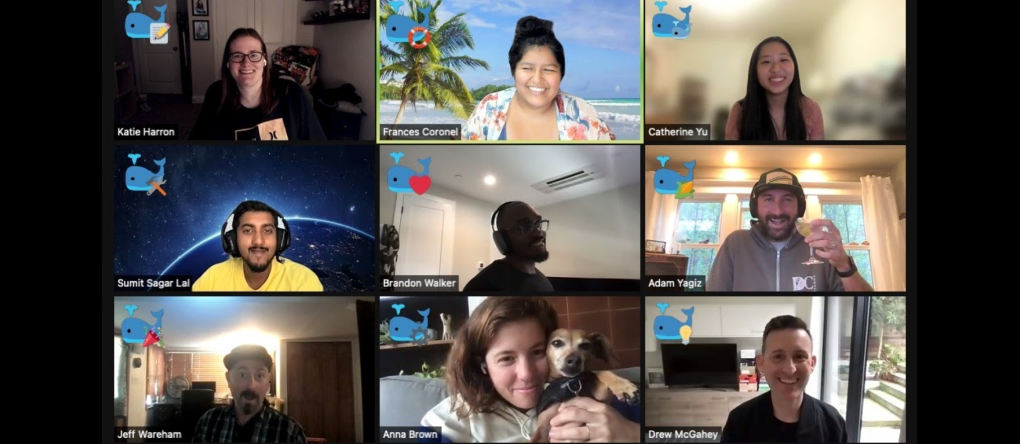On July 21st, 2021, Slack officially became a part of Salesforce at the price tag of $27.7 billion.
This was undoubtedly Slack’s most significant event in the past year. As a frontend intern on Slack’s Customer Acquisition team this summer, I had the once-in-a-lifetime opportunity to be directly involved with announcing the closing of one of the largest tech mergers in history.
Virtual onboarding 💻
Although this internship wasn’t my first remote internship experience, I was completely new to using Slack as an integral part of the onboarding process. Aside from the Zoom meetings and Slack Huddles, I used many Workflows to check in with the onboarding team, and I got introduced to “reacjis” — the art of using emojis to react to a message in Slack — which is now one of my favorite aspects of the Slack experience. 🤩✅☝
After the first week of engineering orientation, I officially joined the Customer Acquisition team. I ramped up by navigating through our folder in the codebase with fresh eyes and reading through existing documentation. My team owns Slack’s web properties, and our mission is to drive Slack’s top-of-funnel growth, build awareness and interest in Slack, and grow the number of new Slack teams created every week.
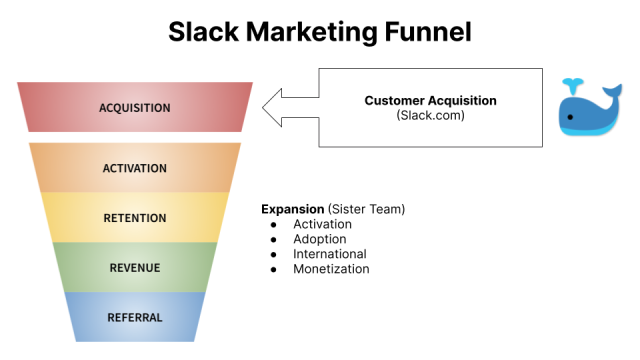
After officially joining my team, I started working on various requests, ranging from small text and LESS styling updates to bugs and tasks that required more complicated logic. Tackling these tickets allowed me to improve my technical skills, work with different teams across Slack, and improve my communication skills by giving updates on every thread to the relevant stakeholders. While this technical work helped me gain familiarity with new languages and technologies I had not been exposed to previously—more importantly—it gave me the chance to exercise my collaboration skills, which, I’ve learned, becomes increasingly important as you level up as an engineer. Feeling both prepped and excited, I then dove into my first sizable intern project: the Salesforce Day One web campaign.
Salesforce Day One launch 🚀
I spent the next five weeks of my internship working on the web portion of the rollout for Day One of the Salesforce acquisition of Slack. This campaign aimed to inform both prospective customers and current users of Slack about the benefits of a combined Slack and Salesforce. The deliverables included a new landing page and various copy and layout changes across multiple slack.com pages.
For example, we needed to change every instance of “Slack Technologies, Inc.” on slack.com to “Slack Technologies, LLC, a Salesforce company.” Such a change seemed pretty innocuous to me at first. However, this seemingly simple task involved legal approval, handling both internally- and externally-owned web properties, and ensuring the new copy was fully translated across all our supported languages. This task and other similarly small tasks all ended up being at least mid-sized in scope. I quickly came to realize that with such a high-visibility and high-stakes project, with 40+ stakeholders across two massive companies, good communication would be vital to success.
Because Slack’s website looks very modern and dynamic, many people would expect it to be written using a JavaScript framework such as React or Vue. Instead, we actually use Hack, a typed version of PHP developed by Facebook in 2014, to create the HTML, and then use JavaScript and LESS to make it more interactive. Thus, the main technical challenge for this project was learning and coding in a new programming language, Hacklang, with a little JavaScript and LESS on the side. In general, however, the development process was smooth as I could leverage existing components from Spacesuit, our beautiful internal web design system, to build out the new landing page.
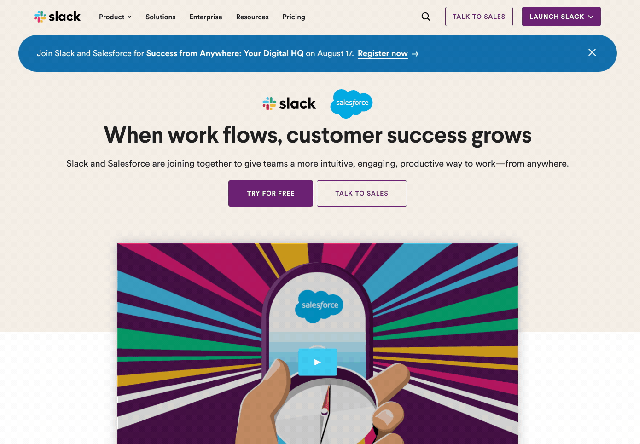
Go to slack.com/about/slack-salesforce to see for yourself 👀
The web updates were not the only change we had to make on the day of close. Changes to our billing pages and activation flow depended on the web updates — as did our social media posts — and they were all scheduled to go out on a tight schedule. Fortunately, we have a great internal tool called Houston. Feature toggles, also known as feature flags, are used to manage and deploy features. Houston is a unified product rollout system that supports both running experiments (e.g. A/B testing) and rolling out features with a simple switch on a toggle. For this project, we used a Houston toggle to seamlessly roll out all changes across our website at once to coincide with the run-of-show schedule. 🚀
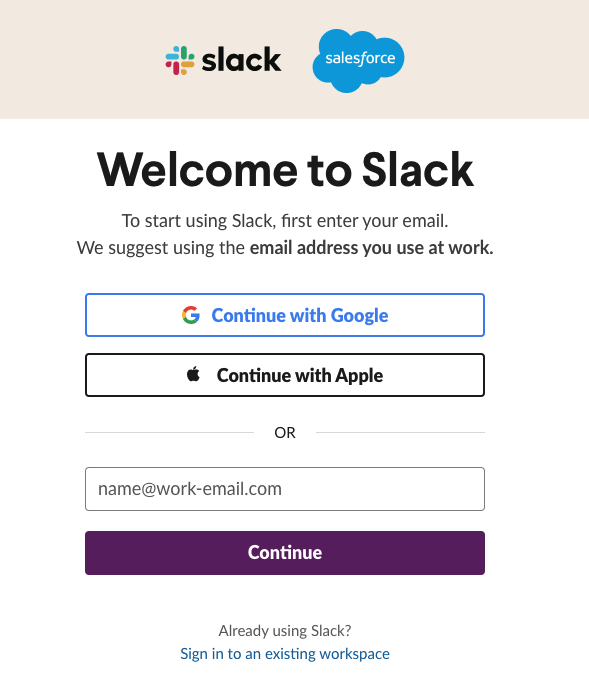
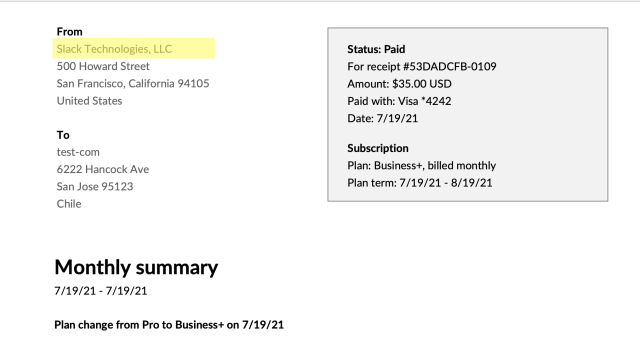
As my manager Drew likes to say, this project was extra *spicy*🌶️🌶️ — in a good way, meaning that it had rapidly changing requirements. I collaborated with many others to put together the assets on the landing page, including coworkers from Design, Copy, Quality Engineering, and Localization, to name a few, many of whom I had never talked to over Zoom or even in Slack DMs before. This project also differed from the other projects and web campaigns that Customer Acquisition had launched in the past because there were many more stakeholders — from my manager to Slack’s executive leadership (our CMO!), to our contacts at Salesforce working on a similar campaign. As a result, there were also many last-minute changes. While the landing page scaffold had been ready nearly a month before the scheduled launch, I merged in multiple pull requests daily with design updates, quality bug fixes, and copy changes in the weeks leading up to the launch.
The launch of all the day-of-close deliverables — including the press release, web updates, blog post, and social media — was specifically scheduled to go live right around 9 am ET on Wednesday, July 21st, which meant we had to be ready by 8 am ET. Now, I’m not much of a morning person, but at least I could wake up at a reasonable time — kudos to the West Coast people who woke up at 5 am to see this launch through. 😴💯
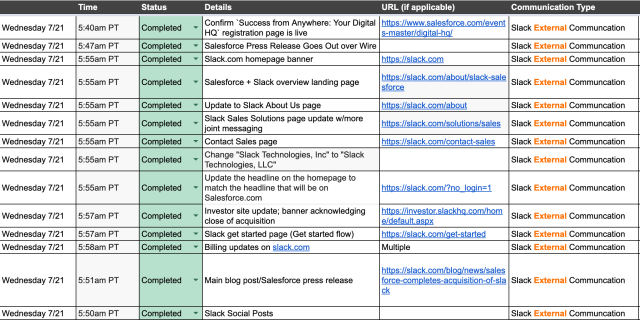
Luckily, everything went smoothly (almost too smoothly; we were expecting spicier issues to pop up), and only one minor issue was identified and quickly resolved right after launch. The launch was actually delayed from the initial estimate by about six days, so it felt a little anticlimactic, but I was still happy to be releasing my work into the world. 😌👏
I am incredibly grateful to my mentor, my manager, and the rest of the Customer Acquisition team for trusting me with such a high-visibility, high-impact project and supporting me the entire time.
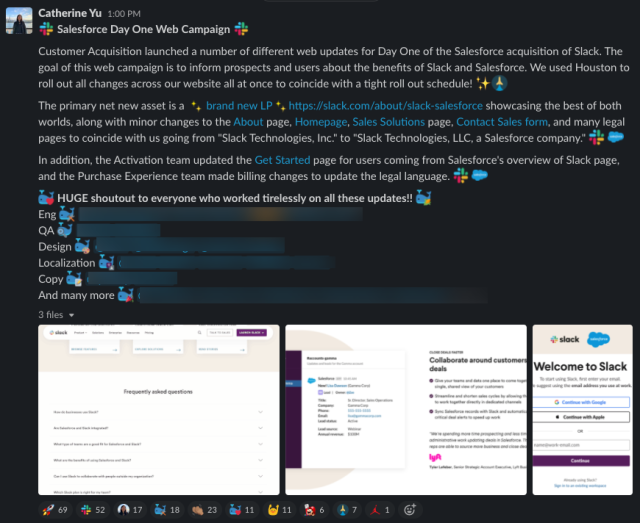
What I learned 📝
I worked with my team very closely for this project, touching various areas of domain knowledge, including working with Spacesuit, our web design system; localization and string translation; and analytics logging. As I explained earlier, communication is crucial, especially when working with as many stakeholders and fellow contributors as possible.
My mentor gave me great advice: send an engineering update in the project channel at least every other day so that everyone else is aware of your progress. For similar reasons, asking questions publicly in a channel is better than privately messaging someone, and it also keeps knowledge and updates stored in history.
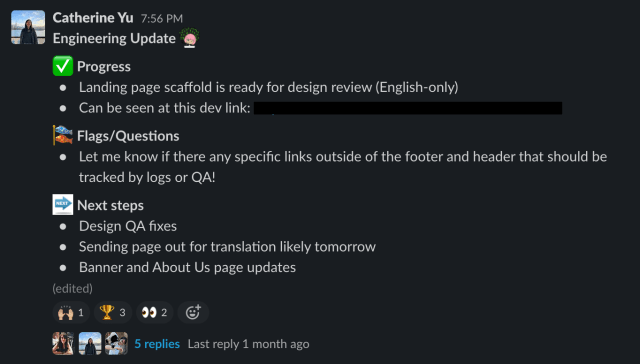
I especially enjoyed working on my team during this internship because the Customer Acquisition team works super cross-functionally. My team is a little different from other engineering teams at Slack. Although we are under the overall Engineering organization, our main stakeholder is the Marketing organization, which means that the priority of our projects can change quickly. On the other hand, this means that the work we do is very high-paced, highly impactful, and evident since more than 400,000 users visit our site every day on average. Our projects are significant for lead generation and greatly influence the more significant customer pipeline, helping fund our fantastic company. 🐳📈
When I found out I was assigned to this team a few weeks before the start of my internship, I was a little surprised: I thought I would be working on the app itself rather than the website. However, in just my second week, I realized this was the team I wanted to be on — I wanted to move fast, work with people outside my team, and have a huge impact. The Customer Acquisition team turned out to be the best place to learn, grow, and accomplish my goals for this summer.

In the last weeks of my internship, I have been able to help improve the performance of web pages across slack.com by adding lazy loading of images, minimizing Content Layout Shift, and improving Largest Contentful Paint across Slack’s webpages. By pushing these efforts to production, we improved the LCP of more than 2,300 pages on desktop to be under 2.5 seconds. I also worked on our web design system, Spacesuit, by updating and creating new components that can be reused on future landing pages, and I contributed to engineering efforts in preparation for Slack’s annual Frontiers conference by customizing the WordPress CMS system that pipes data onto many pages across slack.com. I hope to explore design systems and web accessibility in the future, even after this internship!
Of course, being in the office to meet everyone in person would have been the cherry on top, but at least I was able to meet up with Drew and Anna from my team in San Francisco, and we had a super fun virtual team offsite with the GoGame! Overall, I had a transformative learning and growth experience here at Slack this summer, and I am incredibly appreciative of the Customer Acquisition team and this internship.

Special thanks 🥳
I want to give a HUGE thank you to all the people I interacted with at Slack for supporting me during my internship and making this summer at Slack one of the best. 💕
A special thank you to my excellent mentor Frances Coronel, my manager Drew McGahey, the entire Customer Acquisition team, my ERG buddy Karen Fann, my recruiter Christina Fromson, and the rest of the University team.
Interested in taking on interesting projects, making people’s work lives easier, or just building some pretty cool landing pages? We’re hiring! 💼
Apply now
